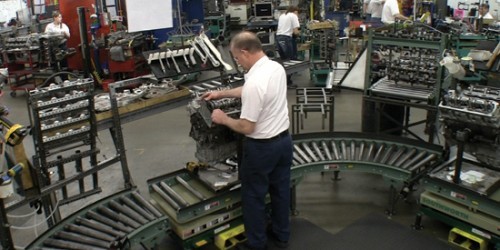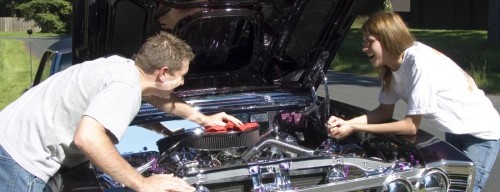Suspension and Steering Systems
The primary function of your cars suspension and steering systems is to allow the wheels to move independently of the car, while keeping it "suspended" and stable.
The primary function of your cars suspension and steering systems is to allow the wheels to move independently of the car, while keeping it "suspended" and stable.

The U-shaped area of POD 302 has made JASPER’s task of assembling a gas engine more efficient. Three of four PODS at the Jasper Facility have been reconfigured in a similar way.

Have you considered how your decision to make a major repair to your vehicle affects our environment? We have researched how much energy JASPER utilizes in the remanufacturing process and compared it with information from the Argonne National Lab, a research center for the U.S. Department of Energy. By averaging the curb weight of three vehicles: a Mercedes-Benz W126, a Hummer H2 and a Toyota Prius, a determination was made on the average amount of energy required in manufacturing vehicles. Energy usage at JASPER, per drivetrain component, was figured and, on the average, only 1% of the energy is consumed in remanufacturing a drivetrain component in comparison to manufacturing the entire vehicle. In tangible terms, that is an energy savings of nearly six tons of coal or 1008 gallons of crude oil.
You car’s fuel system works with the rest of the engine control system to deliver the best performance with the lowest emissions. Check your car’s fuel system regularly or immediately if you smell gas or suspect a problem.
What does it do? The fuel system transfers fuel from the fuel tank and passes it through a fuel filter for straining before it arrives at the injectors. A pressure regulator controls fuel pressure to ensure good engine performance under a variety of speed and load conditions. Fuel injectors, when activated, spray a metered amount of fuel into the engine. Some vehicles use a return line system to return unused fuel back to the tank.